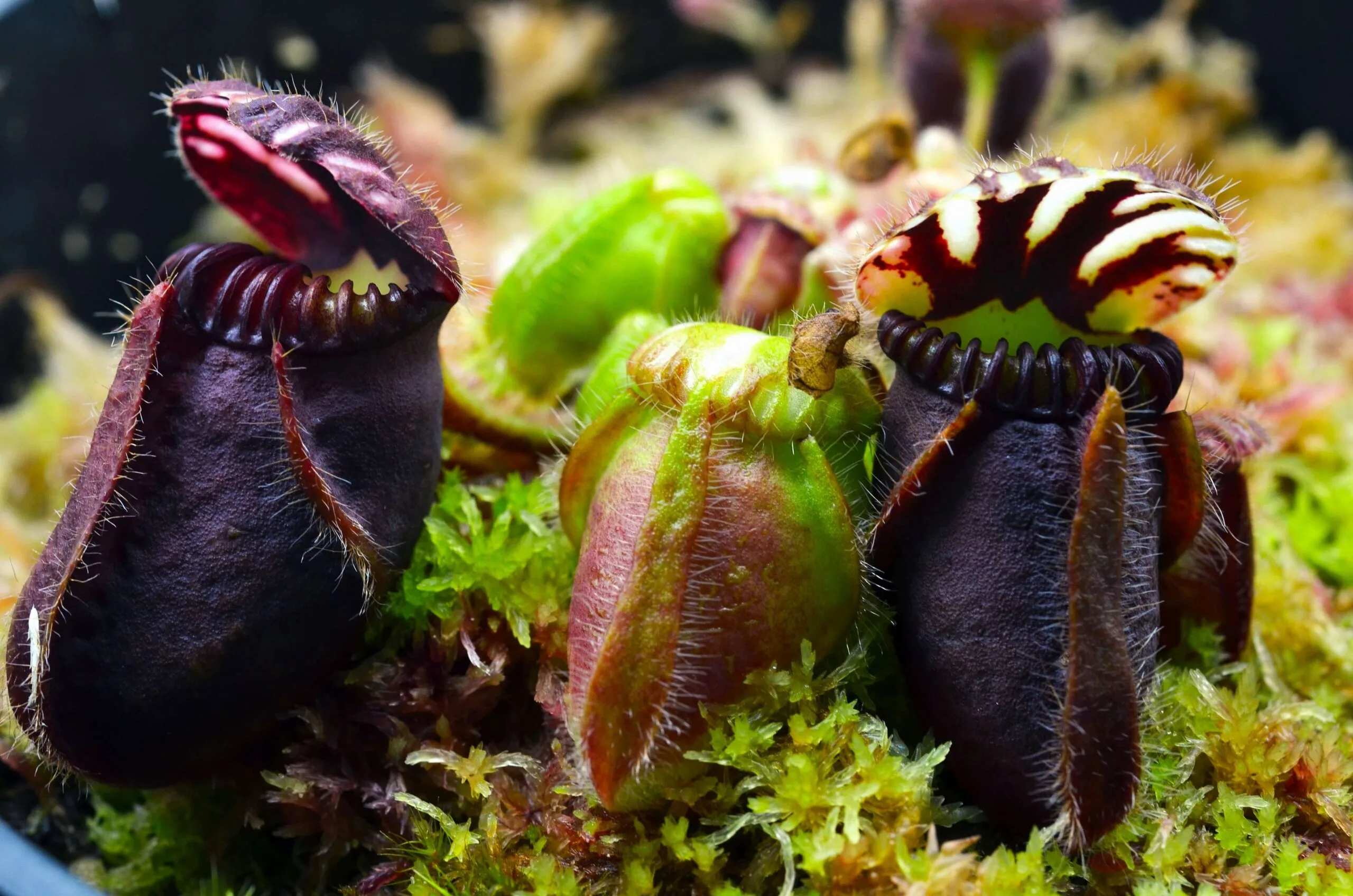Cephalotus
Cephalotus follicularis grows wild in southeastern Australia in wet, peaty areas around the city of Albany. It is under serious threat of extinction, considering the continued expansion of wetland reclamation activities by humans. Cephalotus follicularis has ascidium traps no larger than 7 to 8 cm, with an operculum surmounting the mouth that serves to protect the digestive fluid, which fills 2/3 of the ascidium itself. The ascidia are resting on the soil. It also produces normal, flat, oval leaves in spring: probable inheritance of ancestral non-carnivorous genetic heritage.
Sun exposure
It prefers direct sunlight all year round and throughout the day, but in particularly hot and dry areas or on the hottest days, it can be shaded up to 50%. Even in a terrarium, the lamps, which should be quite intense, must be placed about 10 cm from the plant. With proper lighting, the traps develop an intense red coloration; if your plant’s traps remain green, something is wrong, and you should take action. Only very young plants, which produce different pitchers from mature ones, tend to stay green.
Water
Abundant and constant in summer, preferably kept in a saucer at least 2 cm deep. In winter, it is only necessary to keep the substrate slightly moist. It is important not to overwater during the cold season: many drying leaves may develop mold due to excessive humidity, which can damage the growth points. Especially if the plants are in very small pots, an overly moist substrate can quickly lead to root rot.
Cephalotus is sensitive to powdery mildew, which appears as a light white mold, particularly during transitional seasons when light is scarce, and it can easily cause the plant’s death.
Substrate
The preferred mix consists of 3 parts acidic peat, 1 part perlite or silica sand, and sphagnum moss around the central part of the plant. This last detail helps maintain proper humidity.
Winter
It can tolerate brief frosts but strongly prefers winter temperatures above freezing. During the cold season, it thrives best at 5–7°C. In summer, as long as shading is maintained, it can survive well even at temperatures close to 40°C, though an ideal temperature would be around 25°C.
Roridula
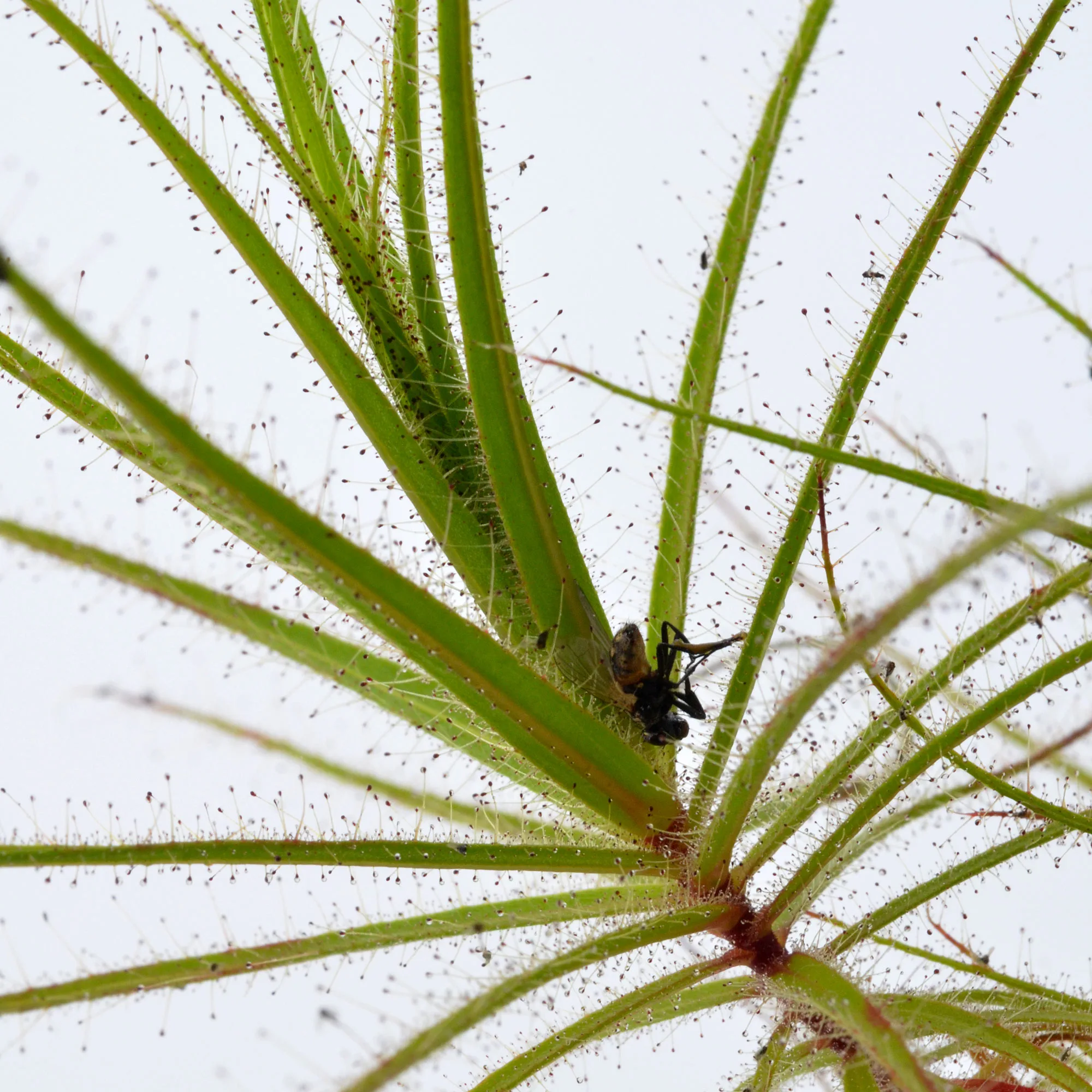
Roridula gorgonias and Roridula dentata are the only two species belonging to this genus of shrub-like plants native to South Africa, where they can grow up to a height of two meters.
Roridula cannot be considered a carnivorous plant but rather proto-carnivorous, as it is not capable of producing digestive enzymes.
What does proto-carnivorous mean? It means that this particular genus of plant has developed an “alternative” method of obtaining nutrients from its prey, a spectacular symbiosis between plant and insect! The leaves, covered in glands, are capable of producing a sticky resin that traps small insects, but there is one insect that benefits from this trap: a small Hemipteran from the Pameridae family, which can move between the leaves of Roridula and take advantage of the immobile prey trapped by the resin to easily hunt and feed on them. Later, the insect’s organic waste will naturally fertilize the Roridula plant, which otherwise would not be able to obtain the necessary nutrients.
This insect lives its entire life on Roridula, reproducing on it and laying its eggs at the base of the plant. In this article, we will discuss how to cultivate Roridula.
Sun Exposure
Full sun!
Why? Roridula naturally grows on small hills alongside other low shrub-like plants that do not provide shade or protection from direct sunlight. As a result, it has adapted to benefit from the sunlight. Its prey-catching strategy likely involves a combination of providing shade and shelter for the insects and tricking them with the light reflections on the leaves, making the droplets appear as a water source.
Water
This proto-carnivorous plant is more resistant to dissolved minerals in water than typical carnivorous plants. However, it is always best to use demineralized or rainwater, like the water it receives from rainfall in its natural habitat.
Additionally, it has been noted that the plant can become stressed if watered with groundwater.
During the summer, always leave a few centimeters of water in the saucer but only refill it once it’s dry. This is because it does not like stagnant water and lives in environments with sandy soil.
Substrate
As mentioned earlier, it grows in environments with sandy, highly-draining soil, so it is advisable to create a similar environment in a pot.
A mix of 40% acidic sphagnum peat and 60% perlite is a good compromise between acidity and drainage.
If you have inert quartz sand, the best mix could be a combination of equal parts peat, perlite, and sand.
It is recommended to use tall pots and gradually increase the size as the plant grows.
Winter
Plants of the Roridula genus belong to a subtropical climate and do not require a vegetative rest period. However, if well-protected, they are relatively tolerant of low temperatures, as long as they do not fall below 10°C for excessively long periods. Even in their natural habitat, there is a summer-winter alternation, but the winters in their climate are milder than our Mediterranean winters.
What happens in winter?
In winter, it is advisable to protect Roridula from frost by placing the pot inside a cold greenhouse or under a porch, but not indoors.
As the temperatures begin to drop, Roridula will slow down its metabolism and, consequently, its growth. During this time, it does not require abundant watering, but it is important to keep the substrate moist with occasional waterings.
In the absence of the host insect, it is a good practice, during this period, to clean the plant of excess prey, as the decomposition of these insects could easily lead to fungal infestations on the Roridula.
Stylidium
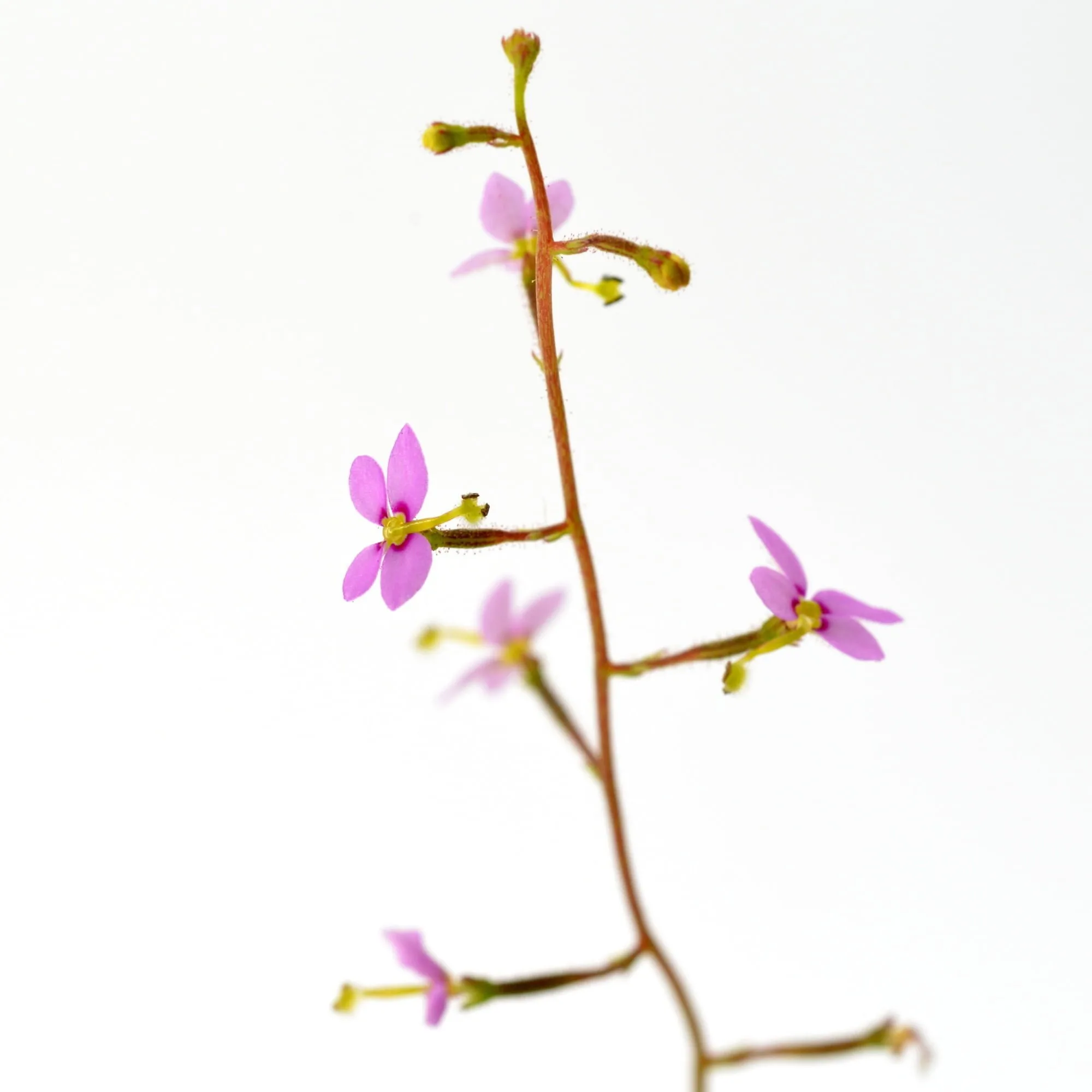
Stylidium is a large genus of carnivorous and proto-carnivorous plants native to Australia, most of which are perennials, with some being annuals. The most common of the nearly 300 species is Stylidium debile.
These particular carnivorous plants appear as small “bushes” from which abundant blooms emerge.
The trap is located along the flower stem, where specialized tissues equipped with glands and hairs produce a secretion similar to the glue of Drosera, which can attract, trap, and digest small flying insects.
A unique characteristic of this plant is the presence of a “trigger” system where the male part of the flower is positioned. This system is extremely sensitive to touch, and when a pollinating insect approaches the flower, this “trigger” snaps in less than a fraction of a second, covering the insect with pollen.
Sun Exposure
Generally, Stylidium prefers a lot of light and direct sunlight.
Water
Demineralized, rainwater, or condensation water.
Keep a few centimeters of water in the saucer constantly, but reduce the water supply during the winter months.
There are species within the Stylidium genus that prefer a drier and more arid climate.
Substrate
50% acidic sphagnum peat and 50% perlite.
In nature, Stylidium thrives in acidic environments that are low in minerals and nutrients, so it is essential to use pure peat, which possesses these characteristics.
For species of Stylidium that grow in more arid areas, it is advisable to add inert quartz sand to the mix.
Winter
Stylidium is found throughout Australia, so it grows in very diverse environments and ecosystems. Some species cannot tolerate temperatures below 15°C, while others can withstand temperatures around 0°C. Generally, the most common species, like Stylidium debile, should never experience temperatures below 10°C, so it is essential to protect the plant from frost using a cold greenhouse, double-glazed windows, or a very well-lit porch. Never indoors! As these plants prefer a high level of humidity in the air.
Brocchinia reducta
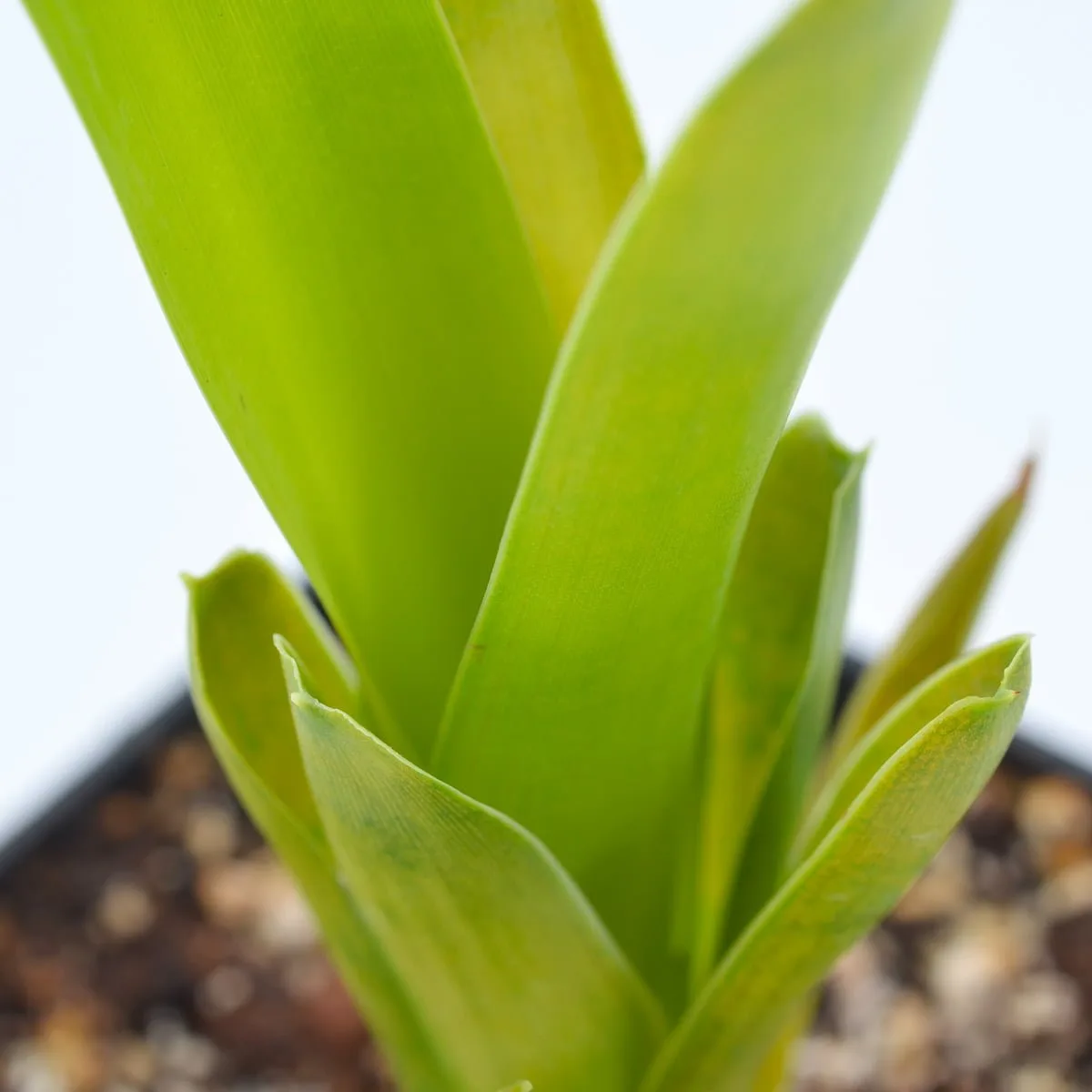
Brocchinia reducta is a carnivorous plant native to South America and belongs to the Bromeliaceae family. Its trap consists of a water-filled “pit” that Brocchinia creates through the development of leaves that vaguely resemble a pitcher. This carnivorous plant uses sunlight and the inner leaf coating to reflect UV rays, attracting insects. Once they fall into the pit, the insects are partially digested by the plant itself and partly decomposed by symbiotic bacteria that Brocchinia uses to obtain certain nutrients not available through the only enzyme it is capable of producing.
Sun Exposure
Brocchinia reducta requires direct sunlight; however, it grows in humid and cool environments. Therefore, it is advisable to shade the direct sunlight during the hottest hours of the day to avoid burns and excessive heat.
Water
Use only demineralized water, rainwater, or condensation water, as it lives in areas characterized by acidic soils lacking minerals and nutrients.
Brocchinia prefers moist but not waterlogged soils, so avoid water stagnation and preferably water from above to moisten the soil without soaking it excessively.
Substrate
Light, soft, and well-draining. 50% acidic sphagnum peat and 50% perlite.
Use pure peat, free of amendments and nutrients. pH should be acidic (3.5–4).
Use tall and wide pots. Brocchinia can reach considerable sizes.
Winter
Like all bromeliads, Brocchinia reducta does not have a dormant period.
During winter, it is advisable to protect the plant from harmful temperatures (below 10°C) by placing it inside cold greenhouses, double-glazed windows, or very well-lit porches. DO NOT bring it indoors.
Even during winter, this carnivorous plant slows down its metabolism, so it is necessary to reduce watering, but still keep the substrate moist.
Heliamphora
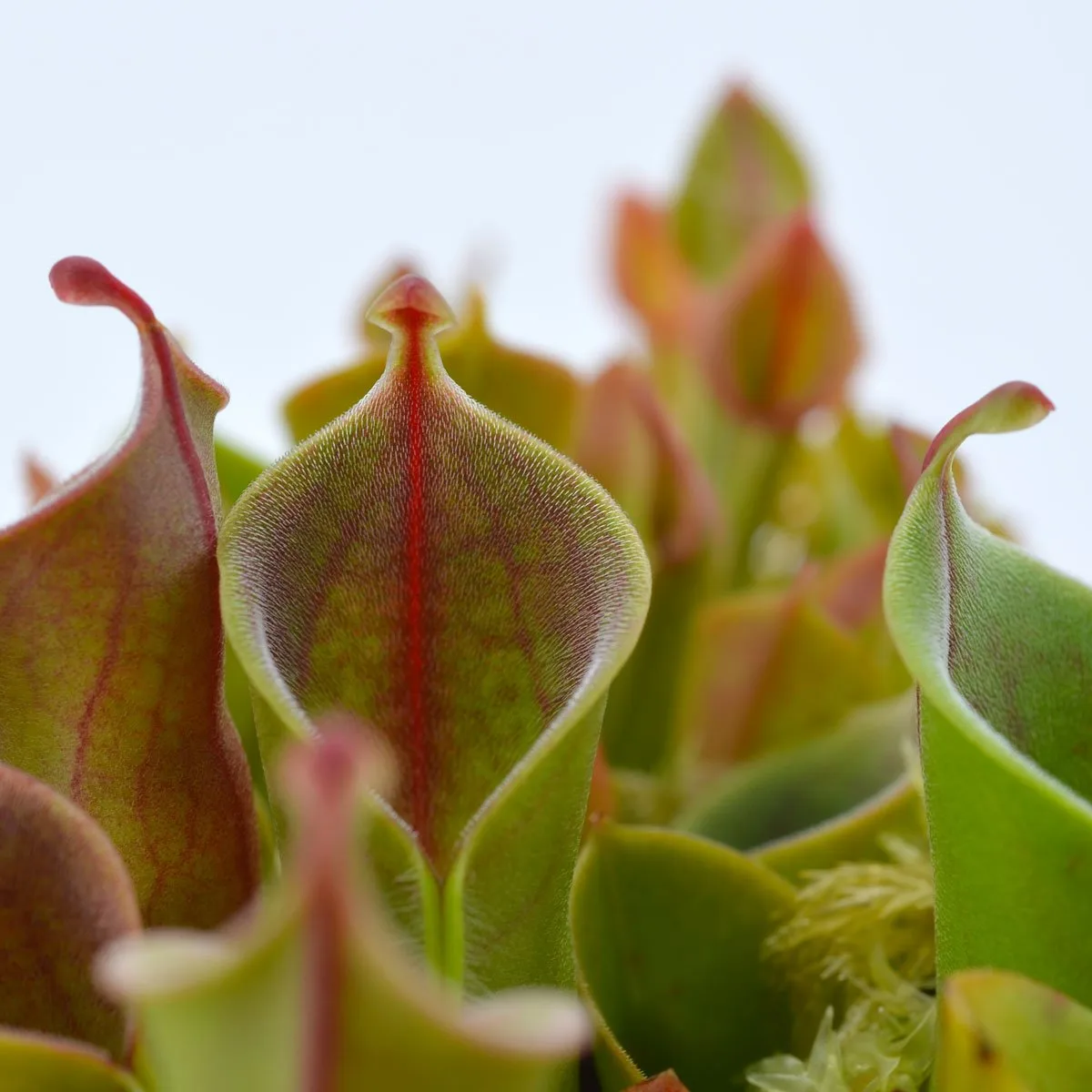
Heliamphora is a carnivorous plant belonging to the Sarraceniaceae family, native to certain mountainous regions of South America, particularly the tepui mountains of Venezuela. It grows in soils composed of inert sand, mosses, decomposing plant matter, and rocks.
The renowned expert Stewart McPherson describes the habitat of Heliamphora as “cold rainy deserts†due to its predominantly sandy soil (acidic and nutrient-poor), a climate with daytime temperatures not exceeding 25°C and nighttime temperatures not dropping below 7°C, as well as abundant rainfall.
Given these temperature ranges, it can be said that most carnivorous plants of the Heliamphora genus grow in highland environments, requiring cool temperatures during the day and a noticeable temperature drop at night.
Sure! Here’s the translation in English:
Sun Exposure
Although many growers recommend using terrariums with controlled light, temperature, and humidity, it is actually possible to grow Heliamphora outdoors and still achieve excellent results.
Heliamphora loves sunlight, but care must be taken to avoid excessively high temperatures. It is necessary to shade the plant during the hottest hours of summer days, preventing direct contact with sunlight.
Water
Heliamphora requires a very humid and wet environment to thrive but does not like water stagnation.
It is important to water generously with demineralized, rain, or condensation water. Leave 1-2 cm of water in the saucer and water again when the accumulated water has dried up.
Substrate
Although it grows in predominantly sandy soils, most species of the Heliamphora genus are not particularly demanding when it comes to substrate. The important thing is that the substrate is soft, well-draining, acidic, and free from mineral and nutrient-rich substances.
Therefore, use a mix of 50% acidic sphagnum peat and 50% perlite.
It is advisable to cover the substrate and the base of the plant with abundant sphagnum, which will help retain humidity.
Winter
Although Heliamphora may resemble Sarracenia in some ways, it is actually a completely different plant. Given the environment in which it grows, it does not require a dormant period.
Ideally, Heliamphora should be grown in terrariums or grow boxes with controlled conditions. However, many of the easier species (such as H. minor, H. heterodoxa, and various hybrids) can spend the winter in cold greenhouses, double-glazed windows, or well-lit verandas. The key is that temperatures should not generally drop below 10°C.
Heliamphora is sensitive to frost! Additionally, it grows in an environment where conditions are virtually constant 365 days a year, so it would require the same water intake. However, if grown outside a controlled system, it is important to minimize water intake during the colder months.
Catopsis berteroniana
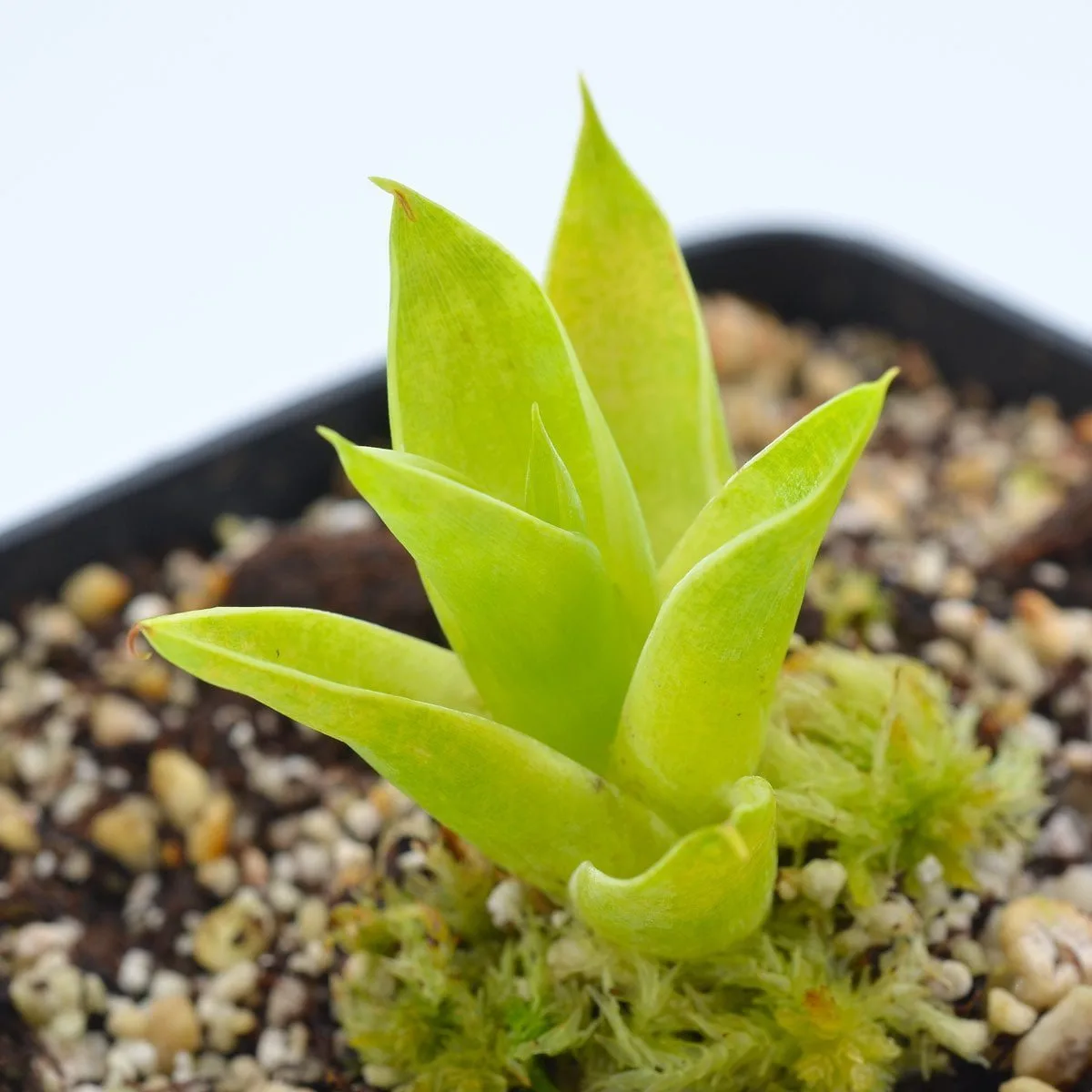
Catopsis berteroniana is an epiphytic bromeliad considered a possible carnivorous plant, similar to Brocchinia reducta, although the evidence is inconclusive. Its natural range extends from southern Florida to southern Brazil. It typically grows on unshaded branches of trees.
Sun Exposure
Catopsis berteroniana enjoys full sun year-round! It is recommended to provide light shading or cooling during the hottest summer months to prevent excessive temperatures that could stunt the plant’s growth. If grown indoors, it needs good lighting with 6400 K lights providing at least 6,000-7,000 lux.
Water
It is recommended to water daily from the top, without a saucer, to avoid water stagnation. It is important to use only distilled water or, alternatively, any water with a very low mineral content. For example, all condensation water (from air conditioners or dehumidifiers) is suitable. The water conductivity should be below 50 microsiemens.
Substrate
Although a mix of 50% acidic sphagnum peat and 50% perlite works as a general substrate, we recommend the substrate developed and tested for Heliamphora for optimal growth of this genus as well.
Winter
The distribution range of Catopsis berteroniana extends from southern Florida to southern Brazil, where it grows on unshaded branches of trees. The climate is cool and misty year-round, so it enjoys high humidity and intense light, but never excessive heat. Cooler nights are ideal. This genus does not go dormant.
It can be grown on cool, sunny windowsills, but the best plants are grown in controlled climate greenhouses or terrariums, where daytime temperatures remain around 20°C and nighttime temperatures range from 5-10°C, along with good lighting (6400 K lights providing at least 6,000-7,000 lux).
Darlingtonia California
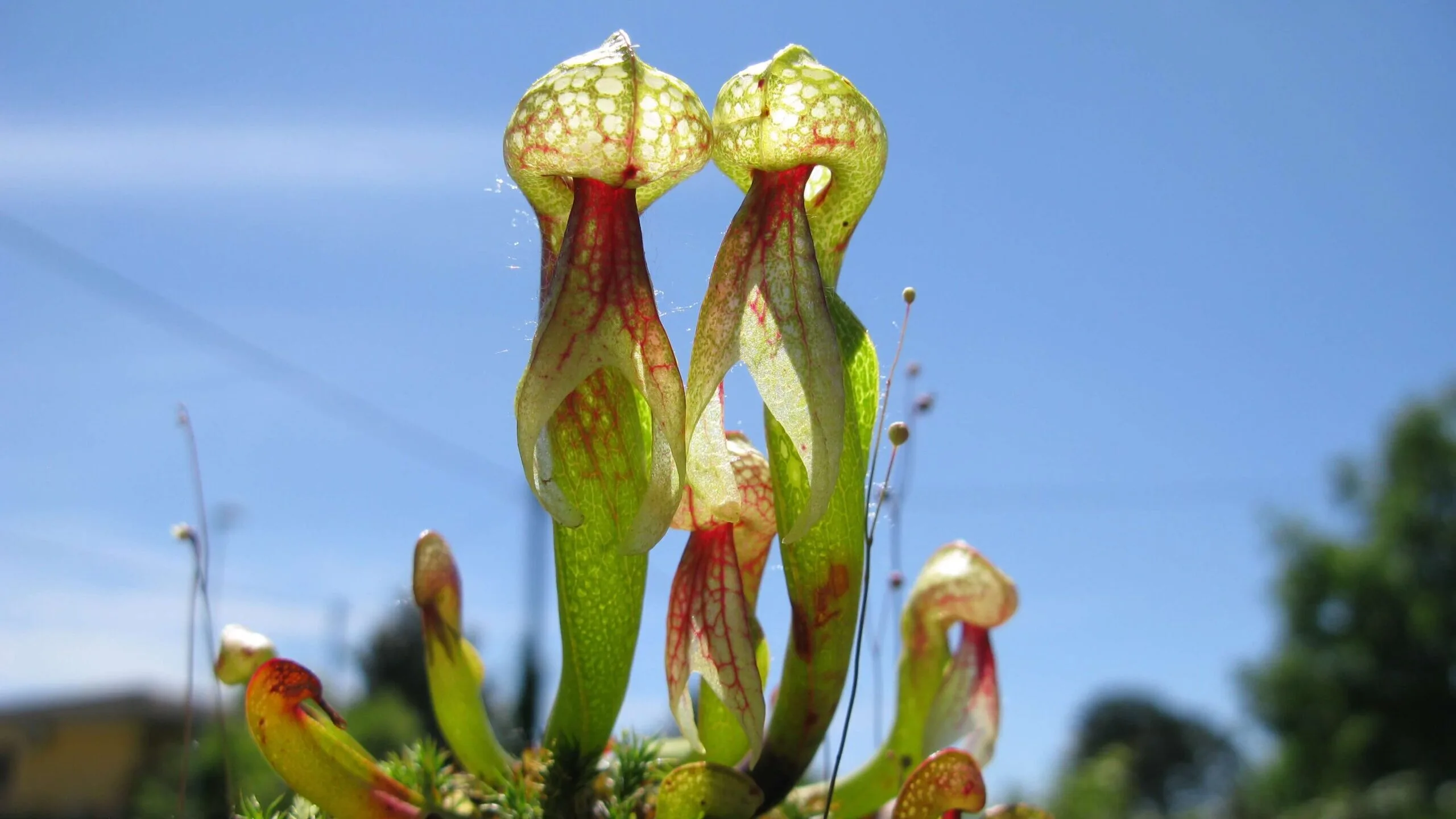
Darlingtonia californica is a carnivorous plant of rare charm and beauty, and it represents an ideal companion for exploring another extraordinary habitat where it has adapted over the course of evolution, emerging as the queen of this hostile environment.
If you are a fan of carnivorous plants, you are likely familiar with Darlingtonia californica, but how much do you know about its habitat? In this article, we will explore the natural environment of this species to enrich our knowledge and use this information to make cultivation not only satisfying but also more accessible and easier.
Let’s begin.
Darlingtonia californica is a carnivorous plant belonging to the Sarraceniaceae family. In nature, it grows in the area surrounding northern California (from which it takes its name), Oregon, and more rarely in some regions of southern Canada.
Because of its appearance, locals commonly call it the Cobra lily or Cobra plant, as, although similar to Sarracenia, it develops a downward-facing hood and has a more or less extensive peristome that resembles the forked tongue of reptiles.
The “windowed” appearance of the pitchers helps confuse insects, which, due to the penetrating light from the outside, once inside the pitcher, can no longer distinguish the true lid. This creates a truly unique and fascinating mechanism.
This spectacular carnivorous plant grows near streams, hills, and very humid meadows, characterized by soft and cool soil, also thanks to the presence of sphagnum. Sometimes, it appears to have semi-aquatic characteristics, as it is not uncommon for it to grow in partially submerged soils where water constantly flows both above and below the substrate surface.
A special feature of Darlingtonia californica is that it seems capable of withstanding toxic substances present in the soil, possibly an adaptation that allows it to survive in places where other plants cannot, thus avoiding competition with other species.
Another noteworthy adaptation is Darlingtonia’s ability to thrive in acidic soils where mineral substances and nutrients are scarce. To compensate for this deficiency, the plant has developed an incredible ability to capture insects to obtain the substances, particularly nitrogen, necessary for its growth.
Sun Exposure
Darlingtonia californica enjoys full sun and strong lighting. However, when summer temperatures are too high, it is better to grow it in partial shade or use shading nets.
Why grow Darlingtonia in partial shade?
Darlingtonia californica does not like heat! In particular, it does not like warm soil! In its natural habitat, it lives where water constantly flows, cooling the roots.
In a closed system like a pot, this condition is difficult to achieve, so it’s better to avoid letting the sun overheat the pot and the water in the saucer. The plant would collapse quickly.
Water
Use demineralized water, rainwater, or condensation water (e.g., water from a dehumidifier or air conditioner).
Why?
As we know, rainwater contains no minerals. Additionally, the acidic environment in which Darlingtonia californica roots makes even the few mineral substances and nutrients present in the soil unavailable for absorption.
For this reason, it has evolved to adapt to such an environment and does not tolerate soils with neutral or basic pH.
How much water?
A lot of water! As mentioned earlier, Darlingtonia californica grows in very humid environments with water flowing constantly.
However, although it is tolerant, it seems to not particularly appreciate water stagnation. Therefore, two options are possible:
- Maintain a constant water level that does not exceed 1/3 of the pot, watering from the top.
- Raise the water level up to just below the surface of the pot but replace it daily with fresh water (always free of minerals!), waiting a few minutes so that the water inside the pot also drains out. This little trick has given great results for several experienced growers.
Substrate
Darlingtonia californica is not particularly demanding when it comes to a peat-perlite mix. The classic mix of 50% acidic sphagnum peat and 50% perlite works fine.
Use very wide pots, preferably made of terracotta, as they heat the substrate less and allow for better aeration.
However, it is recommended to cover the surface with plenty of live sphagnum.
Why sphagnum peat and perlite?
Pure blonde peat has a naturally acidic pH and is therefore free of substances that Darlingtonia californica does not tolerate.
Perlite is used to lighten the peat and prevent it from compacting and rotting more quickly.
Why use sphagnum?
A good covering of sphagnum helps to keep the soil cool and airy, additionally protecting the rhizome of Darlingtonia and maintaining moisture around it, which is a condition it naturally needs.
Many experts grow Darlingtonia californica in pure live sphagnum, often in artificial sphagnum bogs..
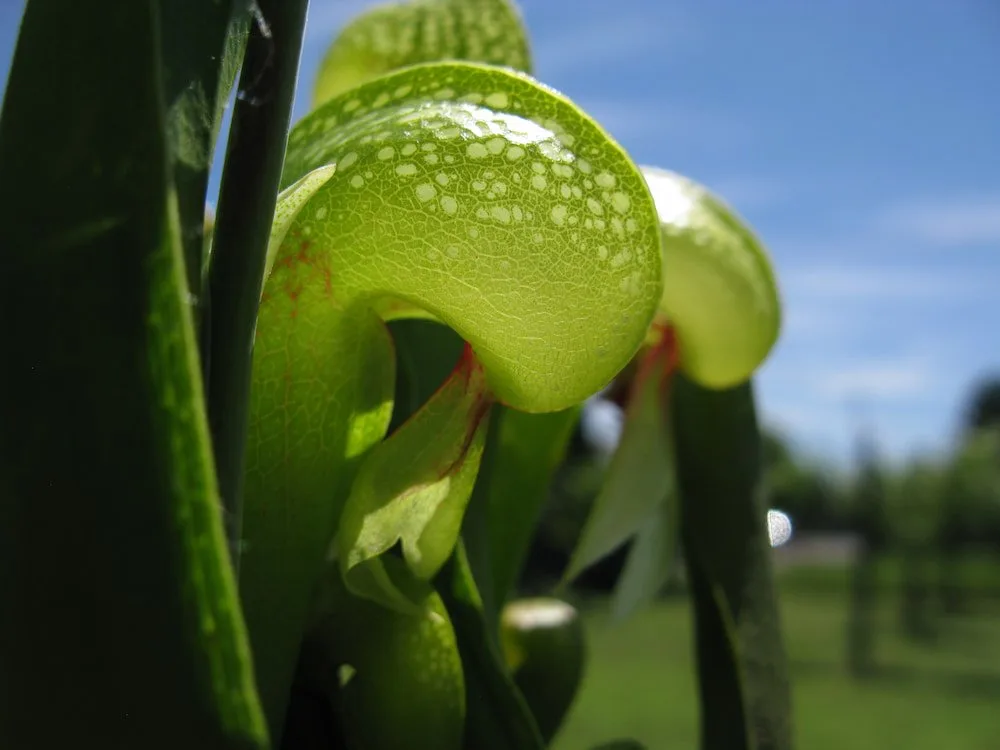
Winter
The winter in the natural habitat of Darlingtonia californica is very similar to the temperate winter in Italy. Therefore, just like Sarracenia, it does not fear the cold or occasional frosts. However, the rhizome of Darlingtonia is more fragile than that of Sarracenia, so it is advisable to protect it in a cold greenhouse or similar systems if the rhizome is not well-protected and is too exposed to the elements.
So, just like Sarracenia, Darlingtonia requires a vegetative rest period.
Reduce the water level (but keep the substrate consistently moist) because in winter it does not need as much water, and this will also help avoid any damage caused by frost.
As winter approaches, Darlingtonia californica slows its metabolism until its growth completely stops. During this phase, it will begin to dry out the pitchers, which should not be cut before they are completely brown, as they will serve as an energy reserve for the rhizome and help the plant return to vigorous growth in spring.
What happens in winter?
So, don’t worry! The plant will be perfectly fine!
What happens in spring?
Like all plants that require a rest period, Darlingtonia californica can recognize the approach of warmer weather.
At this time, it is important to gradually increase watering, which helps simulate what naturally happens in its habitat and consequently supports the plant in a healthy awakening. It will begin to produce new pitchers, and if it reaches reproductive maturity, we will also see the flower stalk and the unique flower that this extraordinary plant produces.
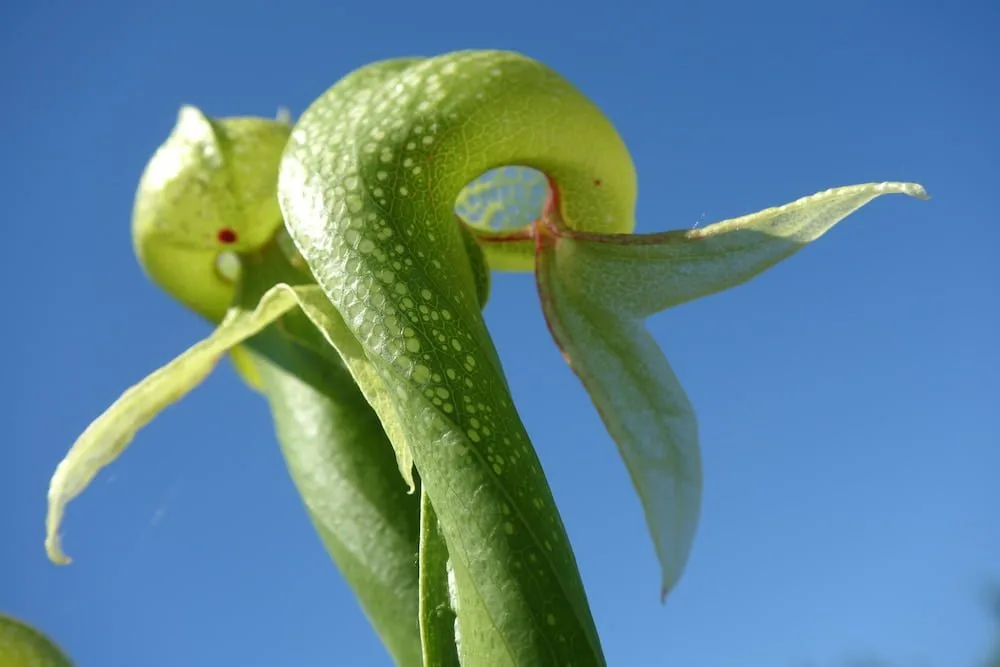
Diseases and Pests
Below, we will look at the most common issues you might face, how to recognize them, and what to do in the unfortunate case they occur.
Pests:
- Aphids: Small piercing insects, usually light green, black, or white, a few millimeters in size and equipped with wings. Aphids suck the sap, mainly near the meristematic tip of the rhizome, causing the formation of deformed pitchers that are often aborted by the plant itself.
They can be easily controlled manually or by using one of the many biological aphidicides available on the market, repeating the treatment after 10 days as these pests lay eggs that are resistant to treatment.
- Mites: Commonly called red spider mites, they are microscopic pests and thus impossible to see with the naked eye. They cause damage similar to that of aphids but are difficult to identify as the symptoms are similar to those caused by aphids, heat stress, or other pests.
For treatment, you can use an acaricide for plants, and as with aphids, it’s necessary to repeat the treatment after a few days.
- Mealybugs: Just like Sarracenia, Darlingtonia can also be attacked by this pest, especially if grown near plants that are already infested. This parasitic insect hides on the rhizome, where it lays its eggs, but is usually found on the entire pitcher.
If the infestation is not severe, it can be manually removed as it is quite easy to recognize, or by using one of the many systemic insecticides specifically for plants available in specialized stores. It’s important to treat periodically to prevent the issue from recurring.
Fungi:
- Cercospora: This is a disease caused by a fungus and can occur in spring or autumn when humidity is too high. It’s not a lethal disease but causes small brown spots surrounded by purple-red on the leaves. While it creates an unsightly effect, it is easily controlled with one of the various products available on the market.
- Botrytis: Commonly known as “gray mold,” this is a type of fungus that attacks the tissues of weakened plants. Its progression is very fast and can lead to the death of the plant in just a few days.
Botrytis can appear at any time if conditions are not optimal, especially when there is poor air circulation. It can be easily controlled with specific products, but if not treated promptly, it could cause the rhizome to rot and lead to the plant’s death.
- Pythium: This is a fungus normally present in the soil but can become pathogenic under conditions that allow it to proliferate uncontrollably (e.g., decaying substrate, poor-quality irrigation water). This pathogenic fungus is probably one of the most dangerous because it attacks the roots, and if not eradicated in time with proper products, it will irreparably damage the root system, impairing its ability to absorb water and causing the death of the plant.
- Anthracnose: This is an insidious fungal disease and difficult to fight if not treated promptly. It’s quite hard to recognize because it can easily be confused with stress from burns, as it appears as dark spots on the leaves and stem that quickly expand, leading to dry areas. It occurs under conditions of poor ventilation and high humidity.
Heat Stress:
Heat stress is a common problem for Darlingtonia if not grown properly. Especially during the hottest weeks of the year, it’s important to monitor the temperatures and ensure that the internal soil temperature does not exceed 25°C, as heat would cause the plant to collapse.
The symptoms of heat collapse begin with the growth point turning black, followed by the darkening and rotting of the rhizome, which will be unable to support the weight of the pitchers. Once this point is reached, it will be extremely difficult to intervene and save the plant.
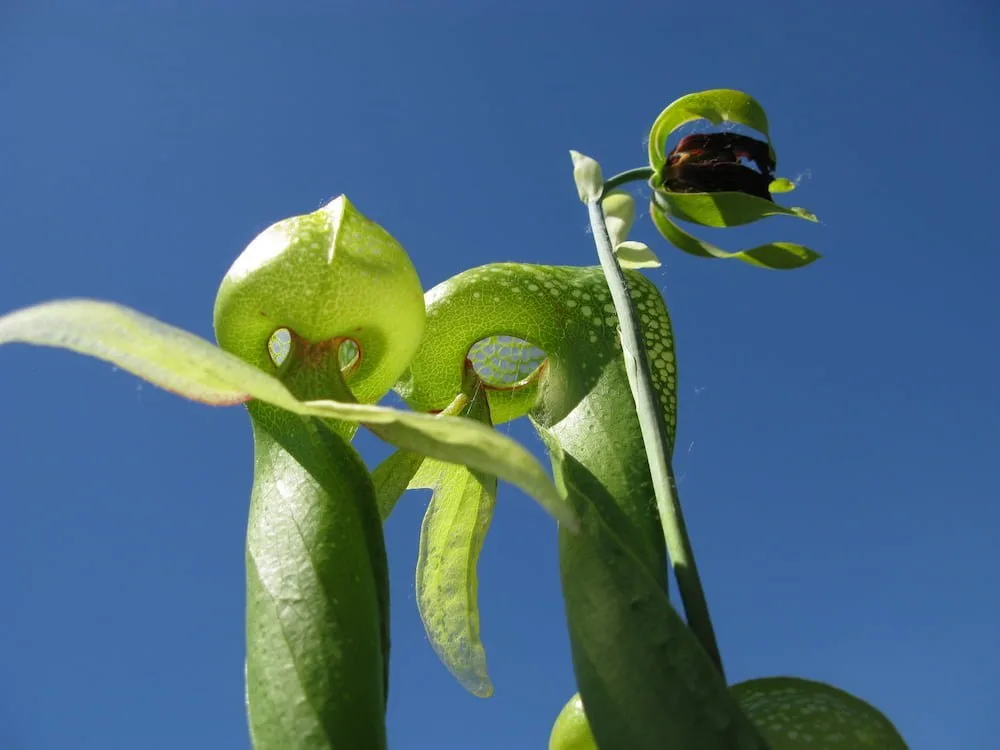
Vacations
Taking care of Darlingtonia while you’re on vacation or away for an extended period is not at all complicated!
The advice is to move the plants to a spot where they won’t receive direct sunlight during your absence, and if you don’t have an automatic irrigation system, you can easily build a raft system that will provide water for your plants.
To learn how to build a raft system, visit the article dedicated to growing Dionaea muscipula, where you will find all the necessary information.
In summary, we’ve learned more about Darlingtonia and its world. In this brief article, we’ve tried to cover this magnificent plant, highlighting the key points for venturing into its cultivation.
Byblis
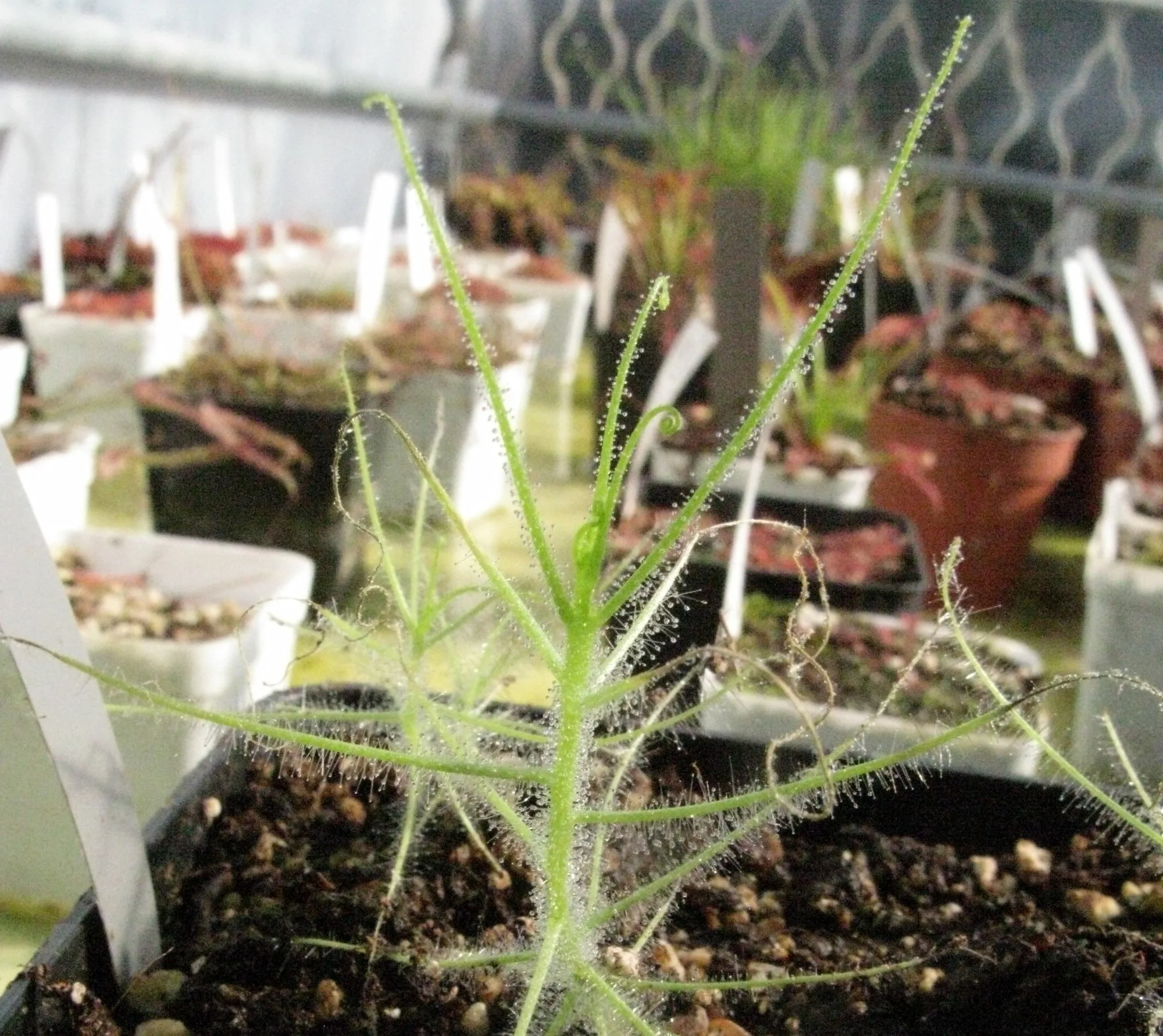
Although Byblis resembles Drosera in appearance and capture mechanism, it actually belongs to the Byblidaceae family.
It is a plant with a glue-like trapping mechanism, native to Australia, where it is commonly known as the “rainbow plant” due to the prismatic effect created by the glue droplets when they are illuminated by sunlight.
Out of the 7 known species of Byblis, only 2 are perennial (B. gigantea and B. lamellata), while the remaining 5 (B. filifolia, B. guehoi, B. aquatica, B. rorida, and B. liniflora) are annuals and require manual pollination to produce fruit and seeds.
Most Byblis species grow in sandy, often swampy soils.
Sun Exposure
Direct sunlight!
Why? For energy reasons, Byblis needs direct sunlight to grow rapidly and reach reproductive maturity before the growing season ends. Additionally, sunlight is essential for these plants to attract insects.
Water
Only demineralized water, rainwater, or condensation water in a saucer that is at least 1/3 the height of the pot.
Most annual Byblis, especially B. aquatica, grow in areas with abundant water, where rainfall is frequent.
Byblis gigantea, on the other hand, prefers drier soils that tend to dry out during the winter season. They should be watered from the top and only when the saucer is empty of water.
Substrate
The best mix for optimal growth of Byblis is an equal mixture of acidic sphagnum peat moss, perlite, and quartz (or river sand, but not limestone).
Why?
Because their natural habitat is characterized by acidic soil that doesn’t make minerals and nutrients available. Therefore, Byblis has adapted to these conditions, and neutral or alkaline pH would harm its development, leading to the plant’s death.
It is also recommended to use tall pots.
Winter Care
The term “annual” implies that the plant lives only during the spring, summer, and fall. However, for many annual Byblis, this isn’t entirely true. In pots, they can survive for a couple of seasons.
Both annual and perennial Byblis are fairly tolerant of relatively cold temperatures, which can approach just a few degrees above zero, but only for a limited period.
They still fear frost, so it is best to protect them during the winter; ideally, they should be kept in a cold greenhouse.
As winter approaches, Byblis will slow down its metabolism, stop producing flowers and leaves, and at this point, watering should be reduced. The soil should remain moist but not soggy.
As spring approaches, gradually increase watering, and as temperatures rise, the plant will begin to grow again.
Utricularia
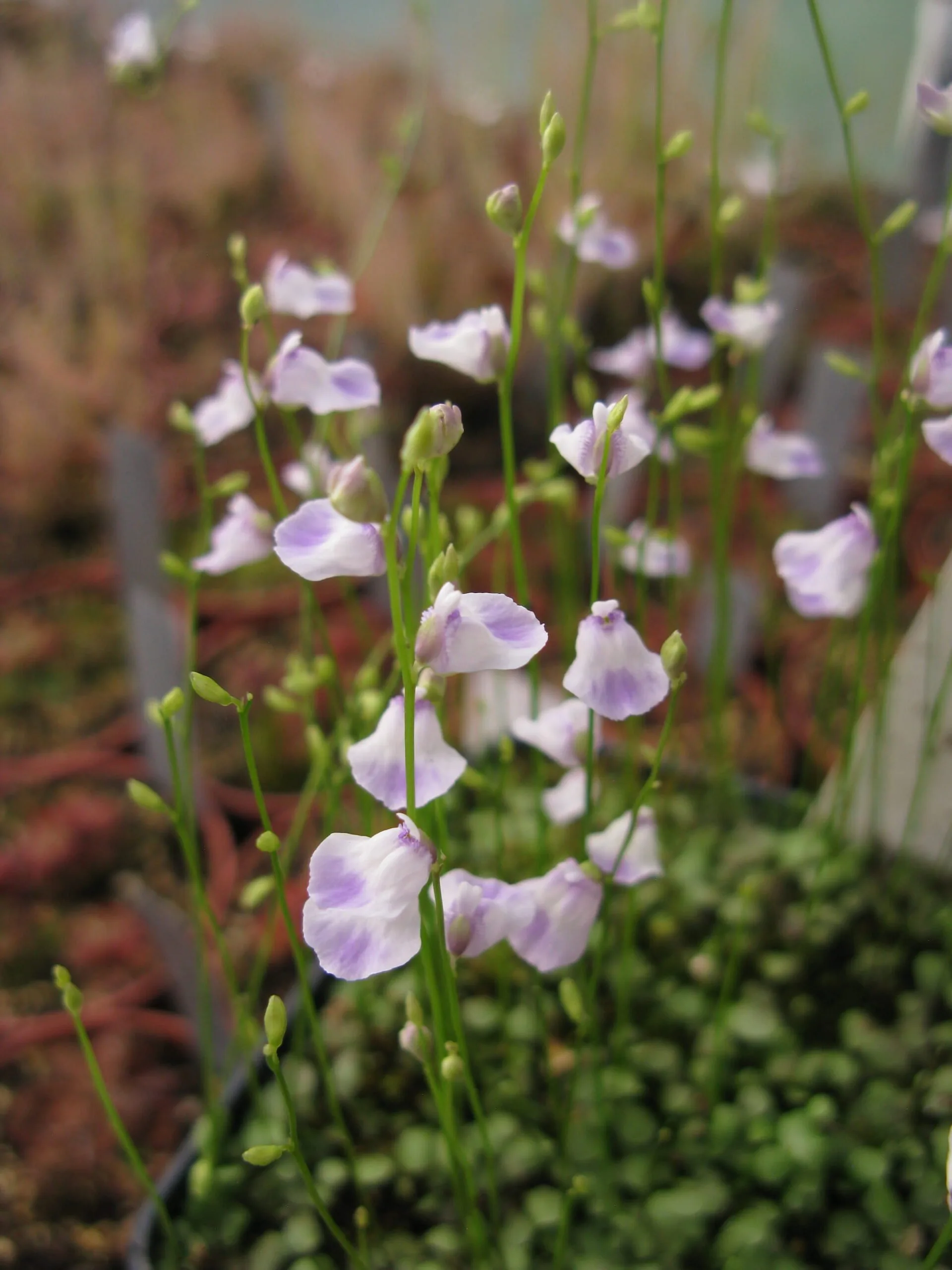
Utricularia is a particular genus of carnivorous plant belonging to the Lentiburliaceae family, characterized by “suction” traps called utricles.
It is necessary to distinguish 3 types of Utricularia:
- terrestrial
- epiphytic
- aquatic
What makes these carnivorous plants unique is the position of the traps, which are located along the roots for terrestrial and epiphytic Utricularia. For aquatic Utricularia, however, the utricles are floating since these plants do not have roots and live suspended just below the water’s surface.
Terrestrial Utricularia:
Terrestrial Utricularia are small-sized plants with small leaves and are carnivorous plants with a ground-covering character, meaning they cover the entire substrate surface. They are often invasive.
They produce many flowers of different colors and shapes depending on the species, and often knowing the flower is the only method of distinguishing one species from another.
Sun Exposure
Plenty of light but not direct sunlight.
Although some invasive species such as Utricularia subulata and Utricularia livida tolerate direct sunlight, many terrestrial Utricularia species prefer environments in partial shade or otherwise screened from direct sun rays.
Water
Demineralized, rainwater, or condensation water. Some Utricularia grow in semi-submerged environments, but generally, all prefer a humid environment, so it is advisable to water abundantly and maintain a few centimeters of water in the saucer.
Substrate
50% sphagnum peat moss and 50% perlite.
Utricularia is not particularly demanding in terms of the peat-perlite mix. It still needs acidic pH soils, free from minerals and nutrients.
Utricularia grows perfectly well in pure sphagnum peat.
While Utricularia grows perfectly in pure peat, it is recommended to mix it with perlite to lighten the soil and delay the rotting of pure peat.
Winter
Protected from frost.
Although Utricularia is a very resilient plant, winter frosts and temperatures generally below 5°C should be avoided.
Reduce watering and, if possible, protect pots in cold greenhouses, double-glazed windows, or very bright verandas.
Utricularia does not require a dormant period.
Epiphytic Utricularia:
These are tropical Utricularia that find their ideal habitat within rainforests, where they use other plants for support. It is not uncommon to see epiphytic Utricularia in cavities on tree trunks or among branches, where mosses, dead leaves, and organic debris accumulate, providing support for the roots of these fascinating carnivorous plants.
They differ from terrestrial Utricularia not only in their habitat but also in their larger size and flowers that resemble those of some orchids.
Sun Exposure
Do not tolerate direct sunlight!
Epiphytic Utricularia grow in understory environments where humidity is high, and sunlight is filtered through trees.
It is necessary to cultivate them protected from direct sunlight. Additionally, these carnivorous plants do not tolerate temperatures above 25°C.
Water
In their habitat, rain is abundant; however, not growing directly on the ground, they do not tolerate water stagnation.
Water them frequently with demineralized, rainwater, or condensation water from above, ensuring the soil is well-moistened but without creating stagnation.
Substrate
As mentioned, this particular genus of Utricularia belongs to epiphytic plants, so they do not root in a true soil but rather in a mix of mosses and debris.
The ideal substrate is very light, acidic, and free of minerals or nutrients. The ideal mix is a blend of sphagnum peat moss, perlite, live or rehydrated sphagnum, to which bark or wood chips can be added.
There is no strict rule for an “ideal mix”; the important thing is that the substrate is light and well-draining.
Winter
Epiphytic Utricularia do not require a vegetative rest period.
In their habitat, the maximum temperatures do not exceed 25°C, and the minimum temperatures rarely fall below 10°C.
In winter, they need to be protected from the cold and cultivated like Nepenthes or other tropical and subtropical plants. However, if the roots are well protected, they are more resistant than these latter species, and exposure to prohibitive temperatures (maximum 6-8°C) might only result in leaf loss, which will regenerate later.
Some epiphytic Utricularia species require a period of cool dryness to flower. This can be recreated in spring by exposing the plants to such temperatures while keeping the substrate humid but not soaked for a short period.
Aquatic Utricularia:
Along with Aldrovanda, these represent the only species of aquatic carnivorous plants.
Aquatic Utricularia lack a root system and thus live submerged below the water surface without anchoring to the soil.
These carnivorous plants can be found practically all over the world, in both warm and temperate climates.
For subtropical aquatic Utricularia, an aquarium with a thermostat is necessary, as they would die in temperatures that are too cold.
Temperate climate aquatic Utricularia, however, are more common and can be grown in ponds, tubs, or aquaponics placed outside year-round. In winter, they will produce turions (similar in appearance to submerged hibernating shoots) that will sink to the bottom of the pond, where a sandy, gravelly, and soil-based substrate is ideal for providing shelter from ice. In spring, they will begin growing again without issues.
Genlisea
Genlisea is another genus of carnivorous plant belonging to the Lentiburliaceae family, like Utricularia.
It features small rosette-shaped leaves and also develops underground traps; however, these traps are not utricles along the roots like those of Utricularia but rather modified leaves forming a “trap” designed to capture small underground organisms.
Genlisea grows in tropical areas of Africa and South America in swampy zones, where it can live semi-submerged for extended periods. Temperatures range from 30-35°C with a minimum of 18°C.
Sun Exposure
Genlisea and all species in this genus do not tolerate direct sunlight, so it is best to grow them in partial shade or protected from direct sunlight.
They are well-suited for growth in terrariums or paludariums equipped with artificial lighting.
Water
Only demineralized, rainwater, or condensation water in abundance!
It is recommended to keep the water level close to the substrate’s surface for extended periods. Many growers suggest reducing water supply, especially in winter, but always leaving some water in the saucer.
Substrate
Genlisea is not particularly demanding when it comes to soil and adapts well to mixtures of sphagnum peat moss, quartz or river sand (inert), perlite, live or rehydrated sphagnum in varying proportions. The important thing is that the soil is acidic and free from minerals and nutrients.
Winter
Being tropical plants, it is ideal to grow them in terrariums with controlled conditions throughout the year, as they rarely tolerate temperatures below 18°C.
Drosophyllum lusitanicum
Drosophyllum lusitanicum is the only plant belonging to the Drosophyllaceae genus. It is very rare in nature and finds its habitat in some arid regions of Portugal, Spain, and Morocco, typically in sandy and rocky soils.
It is similar to Drosera and Byblis in its capture system, which involves adhesive traps along all of its thread-like leaves, which can reach lengths of up to 50 cm.
Sun Exposure
Drosophyllum lusitanicum grows in areas almost devoid of shrub vegetation, and therefore, it prefers direct sunlight even during the hottest hours of summer days.
Water
Living in arid soils, this carnivorous plant does not tolerate stagnation and does not like frequent watering.
It is ideal to use only demineralized, rainwater, or condensation water, watering when the substrate appears excessively dry and hard to the touch.
The roots of Drosophyllum are extremely sensitive to excess water, which can quickly lead to rotting.
Substrate
Sandy and well-draining, use only sphagnum peat moss mixed with perlite and quartz sand in a 1-1-1 ratio.
Use tall and wide pots.
Winter
Drosophyllum lives in a Mediterranean climate, and in winter, it does not fear temperatures close to 0°C but does not tolerate prolonged frost.
This carnivorous plant cannot be defined as perennial, as in nature, it lives for no more than 2-3 years. However, many growers report successfully keeping Drosophyllum lusitanicum alive for up to 5 years.


